Can I Use Printer Paper to Roll a Joint
Whether you prefer a straight, cigarette-style joint or the classic cone, we all strive to roll the perfectly shaped joint. Not only do pearled joints look good, but they also smoke more evenly than their elbowed counterparts. This step-by-step visual guide will show you how to roll a cone joint (or pinner), making it easy to roll a photo-worthy joint to enjoy solo or share with your friends.
Key Takeaways
- Size and material of your rolling paper matters, do your research
- Learning how to roll a proper joint will save you money in the long run
- Joints are rolled with paper, blunts are rolled with cigar or cigarillo papers and spliffs contain tobacco
How To Roll A Joint: Step by Step
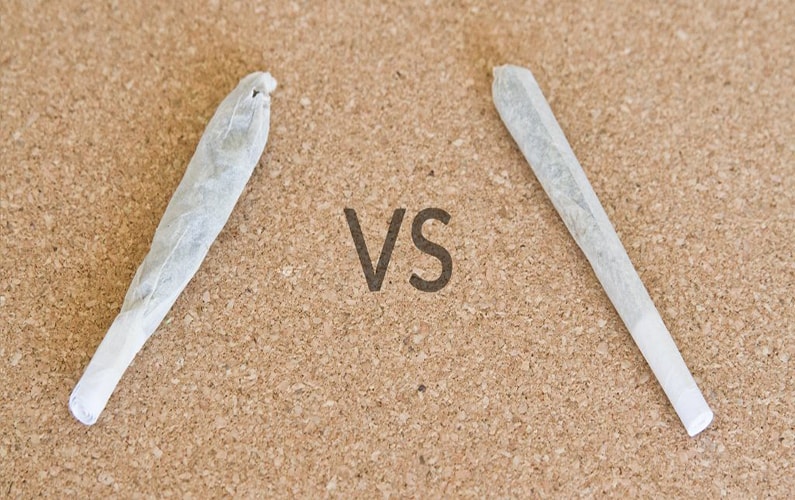
Before you get started, make sure you have all your supplies:
- The best rolling papers ,
- A great herb grinder
- Rolling tips
- Cannabis
- Poker of some kind, etc.
If you need a smart system for managing these items, check out our article on smell-proof stash cases .
1. Place the Crutch
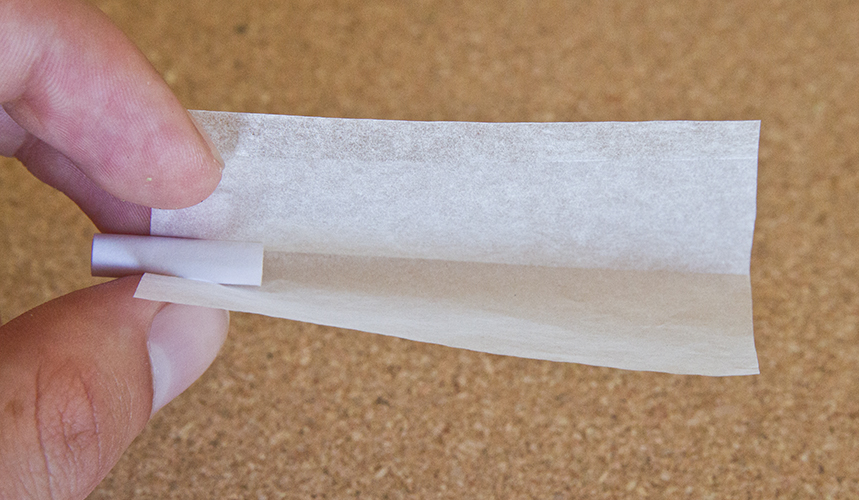
Crutches, or rolling tips, provide a perfect cylinder to which the rolled cannabis can be easily integrated. The crutch establishes the joint's general shape and size, providing a stable area to hold the joint while arranging the bud. We prefer to let part of the crutch stick out the end of the rolling paper, as shown above.
2. Arrange the Bud
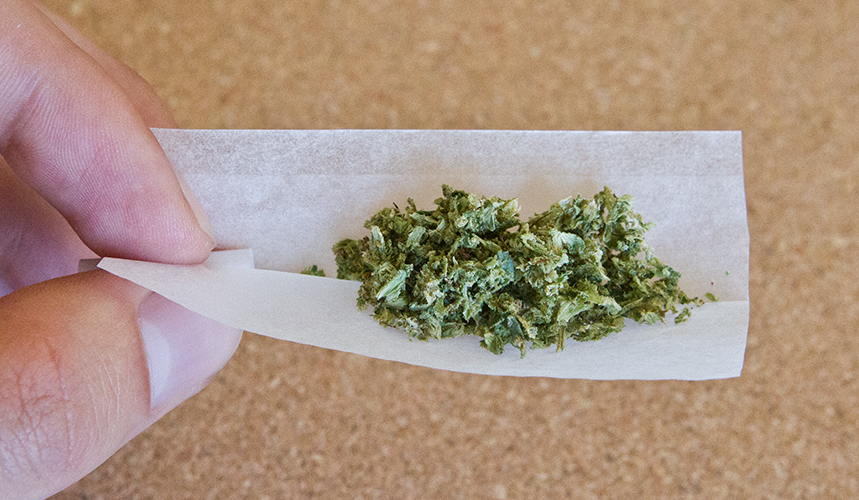
IMPORTANT: The ground bud must be evenly arranged in the trough of the rolling paper. While this may sound obvious, this step is often overlooked or rushed. If the bud isn't evenly dispersed in the paper prior to rolling, the act of rolling the joint into the desired shape will be significantly harder.
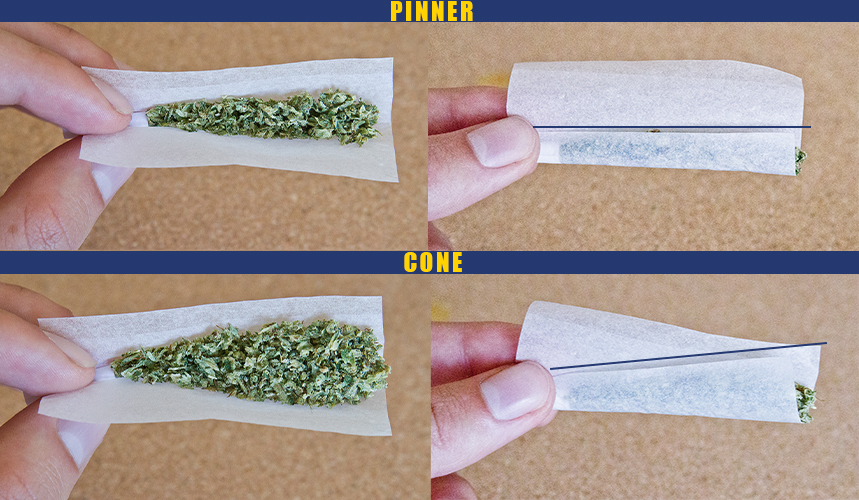
If you are attempting to roll a pinner , the ground bud should be set in the paper as shown at the top of the photo. Alternatively, if you prefer cone joints , arrange in a manner consistent with the lower image.
3. Roll the Paper
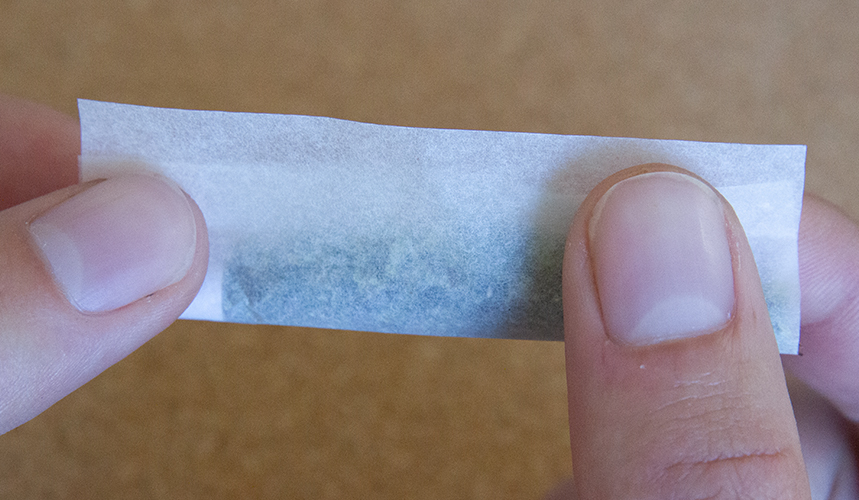
Time to actually roll the bud. This step can be the most challenging, as it requires a gentle touch that only comes with practice. The goal is to move the paperback and forth between your fingers, shaping the bud into either a straight cylinder (pinner joint) or a cone joint.
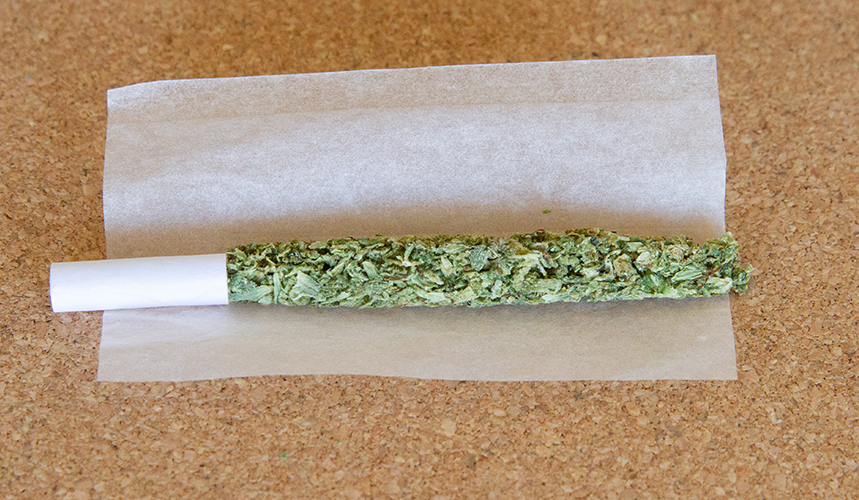
Take your time with this step—if the bud does not hold its cylindrical shape on its own (without your hands pinching the paper), you need to keep rolling, compressing, and shaping. This is arguably the most crucial step in the entirety of the joint rolling process, so go slow here.

Once you have finished shaping the joint, continue to roll the paper between your fingers until the closest flap is oriented as indicated above. Notice that the angle at which the joint is rolled will depend on the desired shape.
4. Tuck, Lick & Stick
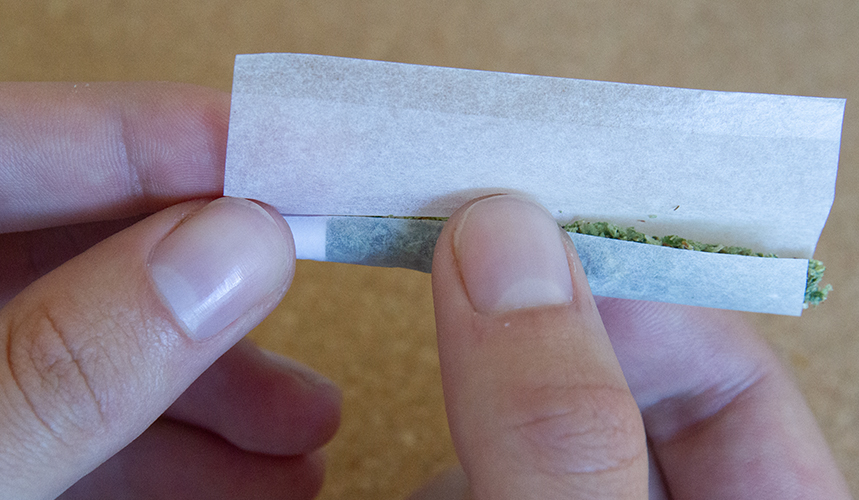
These final moves will seal the paper into its cylindrical shape and determine how tightly the joint is rolled. The tighter the roll, the slower and smoother the joint will burn. The tuck should be initiated at the crutch, focusing on eliminating all slack in the rolling paper for a tight roll. If you are having trouble, try using both thumbs and tuck the first inch of the paper while using the crutch for support. This is another tricky step for those new to joint rolling—don't get discouraged, keep practicing!
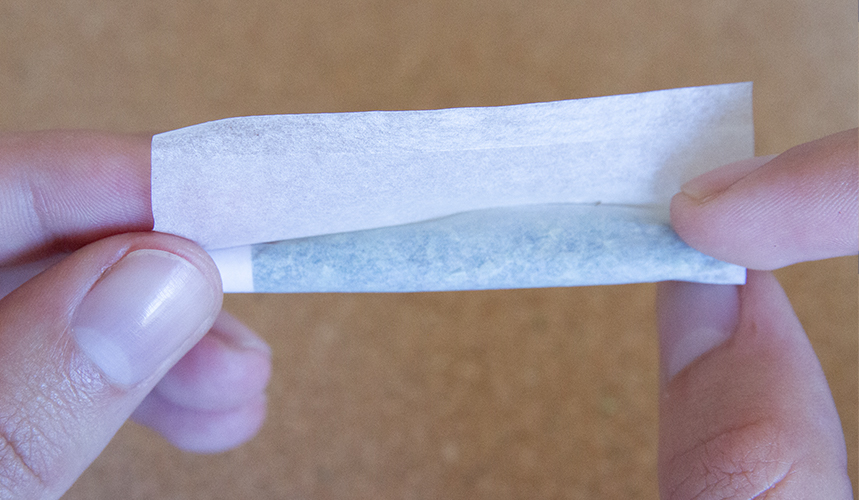
If you have successfully tucked the first portion of the papers but are struggling to complete the tuck (because the paper is crinkling), try using one hand to pull the end of the paper as shown above. This will help eliminate crinkles in the paper, resulting in a tighter, more even roll. Once the entire flap is tucked, keep rolling. At this point, the joint should be mostly rolled and it's time to lick the glue strip and stick it down. Some find it easier to lick the glue on the first half of the paper (closest to the crutch) and stick it down prior to licking and sticking the second half.
Pro Tip: You can lick through the paper and still activate the glue strip to seal the second half of the joint.
5. Lock Down the Crutch
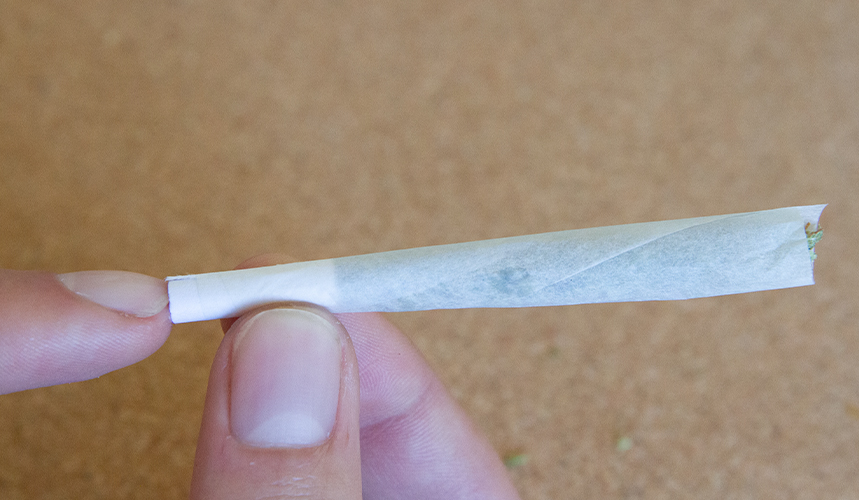
Recall how we left a little crutch hanging out the back of the rolling paper? Now that you're fully rolled, you can push the crutch in towards the rolled bud, effectively tightening the connection between the crutch and the cannabis. After pushing the crutch in to seal the gap, you can give it a quick lick to adhere the rolling paper to the crutch. This reduces the likelihood of the crutch slipping out of the joint.
6. Pack the Tip
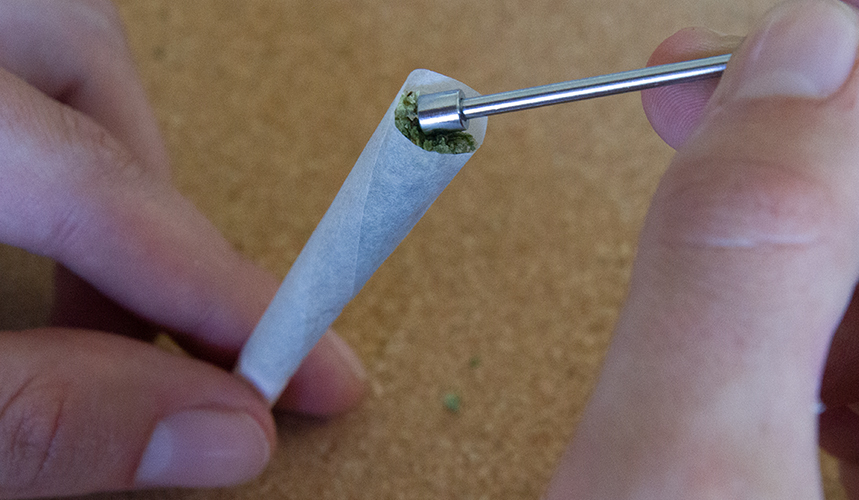
Now that you have a rolled joint, it's time to pack it and twist it off. The concept behind packing your joint is similar to packing a cigarette—the goal being a slower, even-burning smoke. Packing joints also reduce the likelihood of the cherry falling out of the lit joint as the result of a loose roll. There are a variety of methods used to pack joints, we will outline the most common.
Note: it is possible to pack a joint too tight! When this happens, it's nearly impossible to get a proper draw, due to lack of airflow.
MUZZLE LOAD
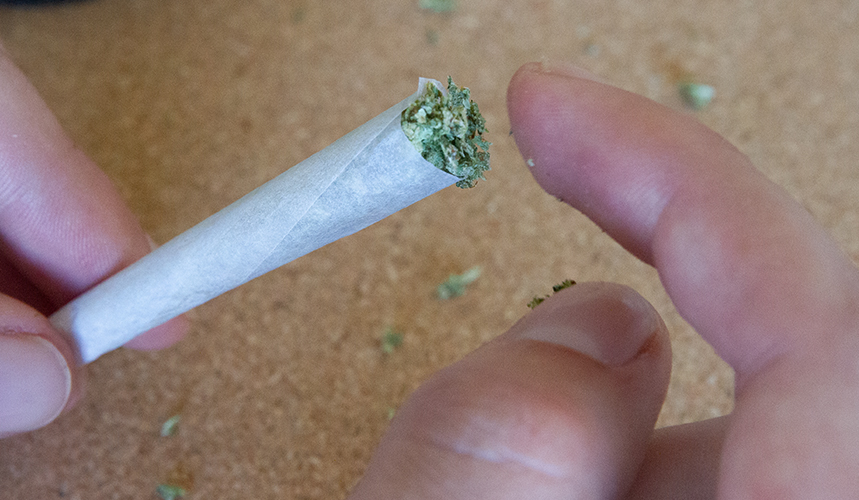
Muzzleloading is a good way to add a little extra size to the end of your joint. The technique involves shoving ground bud into the tip of the joint similar to loading an in-line rifle. It is best performed with some sort of tool—a pen, dabber, damper, scissors, house key, headphone cord, etc. Use a tool of your choice to help push the bud into the cylindrical tip of the joint and compress it down.
DROP
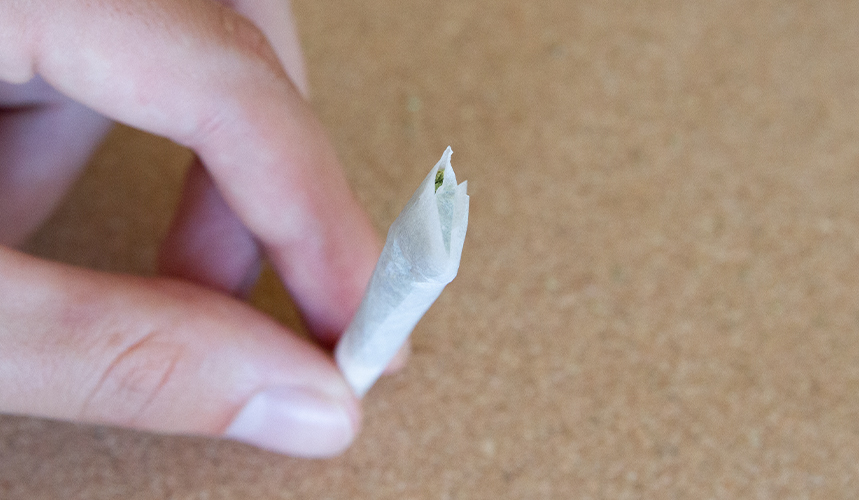
This packing technique entails dropping the joint (crutch down) onto a hard surface—essentially letting gravity do all the work for you. We have found that several repeated drops from a few inches above a table (or another hard surface) tends to result in the best pack.
SHAKE
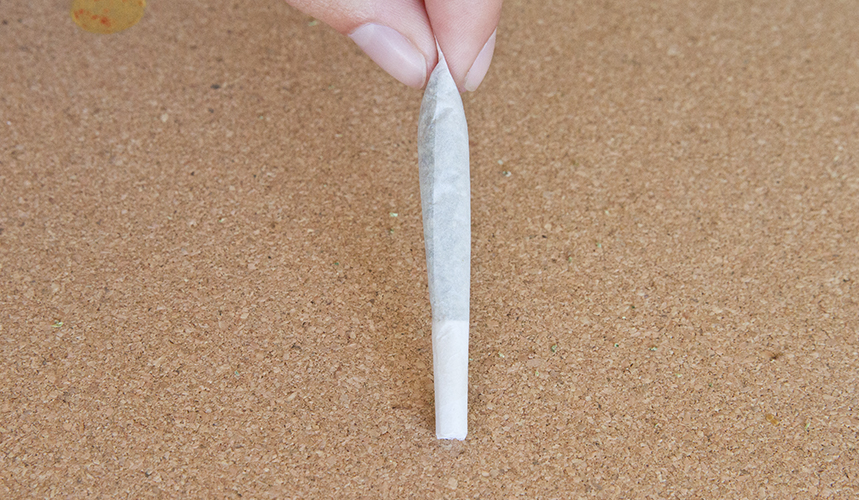
This method of packing joints uses centrifugal force and your fingertips to compress and pack the joint. We should note that this technique only works if you have some rolling paper at the tip of the joint to pinch and hold. Once you have the paper at the tip of the joint secured between your fingers, gently use your wrist to shake the joint back and forth as indicated.
7. Twist & Seal
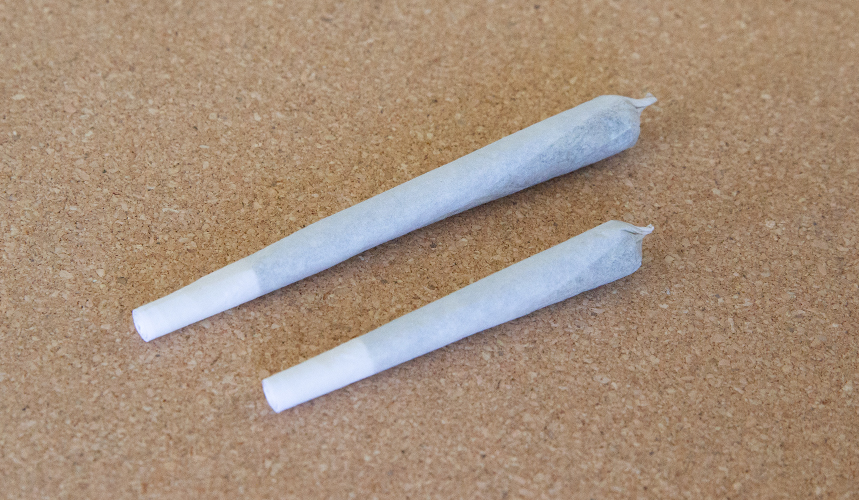
Give the paper at the tip of your joint a slight twist to seal it and you're done! By utilizing any or all of these rolling techniques, you will produce a superior joint that results in a more pleasurable smoking experience.
Inside Out Rolling Technique
Truly slow-burning, perfect joints are rolled inside out! Learn how to roll a perfect joint with the paper inside out. Many people find that all the same techniques apply, and it soon feels easier than rolling the regular way. Did you know that the type of rolling papers you use will affect how your joint rolls, smokes, and tastes? As a rule of thumb; the thinner the paper, the slower the burn. If you have never tried ultra-thin rice paper, now is the time.
Rolling Like a Pro on the Go
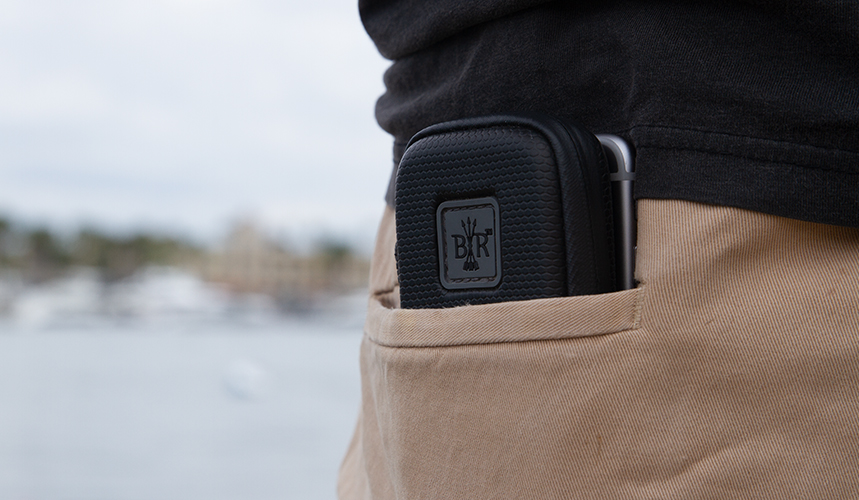
You can carry all your joint rolling supplies and concentrates in a smell-proof safety case. By storing extra flower and concentrates in your smell-proof containers, you can vape, roll another, and even pack a one-hitter on the go .
Tips For Rolling Perfect Joints
Every smoking circle has its de-facto joint roller: The guy everyone turns to when the team wants to burn one, or the girl who can twist perfect pinners while walking into the wind holding all her smoking supplies (we don't know how she does it either).
Are you, well, not that person? Are you looking to improve your rolling technique? With a bit of practice and the right information, you don't have to be a magician to craft a picturesque, smooth-burning joint. Here are 10 tips to help you roll a perfect joint.
Use the Best Rolling Paper
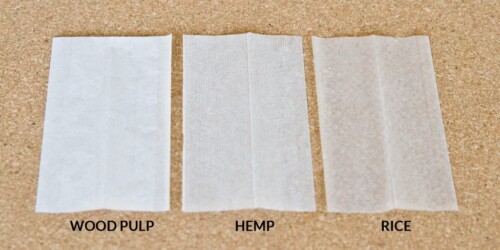
Are you still grabbing Zig-Zags off the counter at the gas station? They are impacting the flavor of your joints. There are three types of rolling paper materials and they each have unique characteristics that affect the way your joint rolls and smokes. Steer clear of wood pulp rolling papers, you want a paper made of rice or hemp. Those just learning should try a hemp paper as they are easier to roll with and stay lit well. Expert rollers looking for a flavorless, slow burn and a precise roll will benefit from rice papers.
Select the Right Size

The right size rolling paper is a situational decision based on a few key factors: How many people are you smoking with? How high are their tolerances? How many joints do you intend to roll?
If you show up to Snoop Dogg's house with a pack of single-wides, you won't be able to roll 'em fast enough. The most popular and widely available sizes are 1 ¼" size and King Slims. 1 ¼" is generally considered to be the 'standard' cannabis rolling paper and suits one to three people with moderate to low tolerances. King Slims are better for moderate-tolerance groups of two to five people or high-tolerance groups of one to three people.
Always Grind First
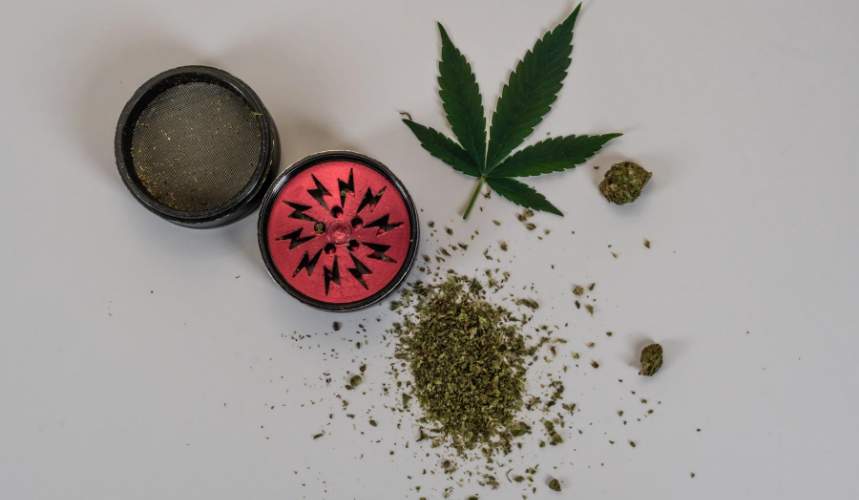
You don't need to spend $60+ for the best grinder! Regardless of your rolling abilities, crafting a perfect joint will be a futile exercise if your herb isn't evenly ground. We recommend metal grinders , as they are more durable and provide a smoother, more consistent grinding action – but they are also available in plastic or wood versions. All that matters is using one!
Use a Crutch, They Are Clutch

Have you ever been handed a joint with a soggy end that you can barely smoke? Don't be "that guy" responsible for subjecting your smoking circle to that experience. Also called a filter or tip, a crutch is essentially a mouthpiece made of glass or wood pulp—you can purchase perfectly-sized rolling tips or make them at home . They act as a handle that aids in holding and passing to others while optimizing airflow for an easy draw . If that weren't enough, they also aid in the joint rolling process by providing a perfect cylinder to which the rolled cannabis can be integrated. The best part: Now you can smoke your joint to the very end.
Arrange Slowly Before Rolling
Have you ever noticed that some joints come out looking like they have a little "pooch" in the middle? A bit of gentle organization with your fingertips is all that's needed to position your bud properly and prevent the "pregnant" look, but it's often overlooked. Pinners are typically rolled for smaller groups and are very efficient, whereas cones provide a powerful hit and maximize the size of the rolling paper .
Final Prep, Then Roll Patiently
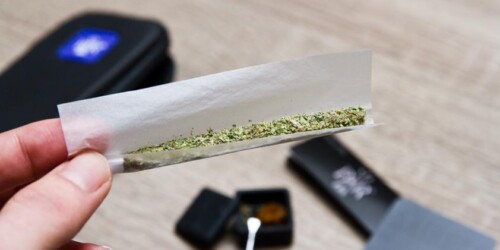
It's difficult to roll great joints if the ground cannabis is all over the place, so take some time and arrange it neatly within the paper. It's important to take your time working the cannabis down into the paper to create a tube.
After you've arranged the bud and rolled the paper back and forth between your fingers, set the whole thing down on the table and see how your roll behaves. If it doesn't hold its cylindrical shape, you won't be able to get that tight tuck you're looking for.
Create Paper Tension Using the Tip
If you get a little crinkle in the paper after the initial tuck, you can fix it! Using one hand hold the tuck in place, shift your other hand to the tip of the paper, and pull away from the crutch. Focus on creating just enough tension in the paper to smooth it out, but don't pull so hard that you tear it.
Light it Correctly, No Inhale on Ignition
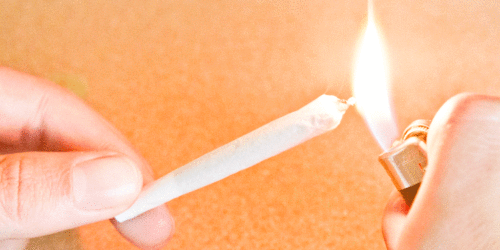
Do not try to earn style points when lighting your joints. Cannabis and organic raw hemp flower joints do not burn like cigarettes, and therefore should be ignited in a different fashion . Gently rotate the joint while slowly increasing the amount of direct heat to create a long-lasting, slow-burning cherry right from the tip of your joint, preventing the dreaded "canoe" that forms when part of the joint burns more quickly than the rest. If one more person rubs their saliva all over the side of the joint to slow down the canoe , we might have to skip our turn.
Smoke Less Paper

Did you know you can roll joints with the paper flipped inside out like pro skier Tanner Hall ? By minimizing the amount of paper used to seal the joint, you can further decrease the burn rate and avoid unwanted paper taste. Rolling inside out may have a steeper learning curve, but those who master it rarely return to the traditional style . Give it a try once you have your basic technique down—you might surprise yourself.
Twax for Potency

"Twaxing" is a new trend in cannabis. As defined by the originator, @WA5280 , to twax is "to apply hash/concentrates to the inside, outside, or tip of your rolls/bowls in any way, shape, or form." The main benefit here is a huge increase in the potency of your joint, which makes concentrates (including CBD concentrates ) a potentially helpful addition—especially when sharing a joint and smoking in larger groups. If you don't have access to BHO or any other cannabis concentrates where you live, you can still learn how to make dabs at home! By implementing the inexpensive and easy-to-execute rosin press tech , you can use any cannabis flower to produce concentrates for your joints or blunts.
CBD Joints: Symptom Relief Without the Buzz
Everyone loves a classic cannabis joint, but did you know you can also roll a jay with organic hemp flower ? Hemp is naturally high in CBD and can provide fast-acting, full-spectrum symptom relief when smoked.
We enjoy the organic, non-GMO, sustainably grown hemp flower strains from Canna Comforts , which look, smell, taste, and smoke just like the top-shelf marijuana strains that inspired them. Federally legal and batch-tested for quality, purity, and potency, we trust Canna Comforts for a delicious and therapeutic hemp flower experience. T heir diverse array of strains ensure the right fit for any condition.
How to Roll a Joint Inside Out
Our favorite way to roll a joint and eliminate excess paper is a European rolling technique referred to as rolling 'inside out' or ' backroll '. While the technique is a bit more challenging, using less paper typically results in a slower burning joint with less noticeable paper taste.
The majority of joint rolling tricks will still apply when rolling inside out, so this is equally suited for experts and beginners, but this one is an eye-catcher in the smoking circle . The primary difference is the orientation of the rolling paper—hence, the name. The goal when rolling inside out is to use the minimum amount of paper required to complete one rotation around the bud and seal it right on the glue strip.
Many joint smoking connoisseurs prefer this method, as it results in a more even burn with less likelihood of canoeing or "running." Below, we have outlined the steps required to roll the perfect inside out joint.
Prerequisites
If you really want to refine your rolling ability, we recommend combining the inside out technique with an ultra-thin, tasteless rolling paper like rice paper. As a general rule, thin rice paper allows for a more precise roll compared to hemp and wood pulp papers. If you have never tried rolling rice paper, now is the time.
1. Flip the Paper
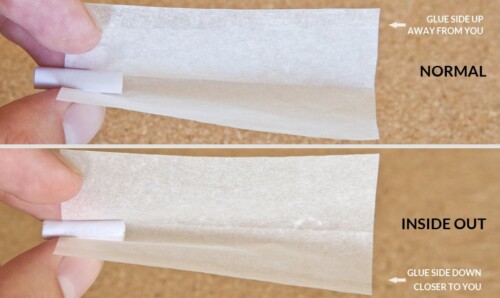
Rather than using the normal paper orientation, flip the paper over so the strip of glue is closest to you with the adhesive portion facing downward.
2. Arrange and Roll as Usual
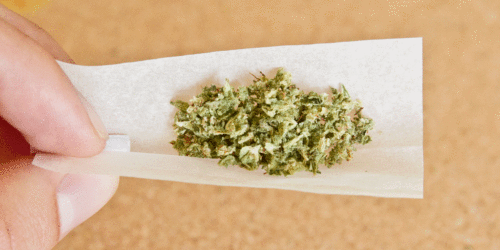
Once the paper is oriented correctly, fill the paper with ground bud and arrange it evenly for easy rolling. Shape the joint just as you would when rolling normally .
3. The Inside Out Tuck

At this point, the rolled cannabis should be appropriately shaped and ready for the tuck. Notice that you will be tucking the glue strip (opposite of the normal joint-rolling method ).
It's crucial to execute a tight, slack-free tuck because the only point of overlap will be the glue strip, giving you less leeway to correct through the rest of the roll. When rolling inside out, the tuck will determine where the joint is sealed.
If the paper is stubborn and continues to crinkle when tucking, try using one hand to pull the tip of the paper away from the crutch.
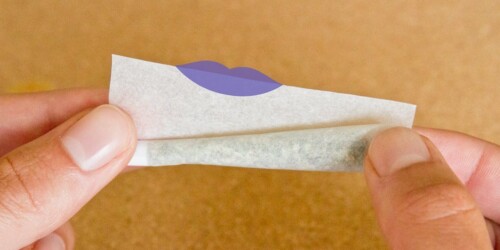
As a final touch to increase the tension of your tuck, you can use your lips to pull the slack out of the papers with your fingers. Grasp the paper as indicated above to effectively tighten the spiral of rolling paper around the tube of bud.

Important: Once you have made the initial tuck, do not shift your finger positioning along the joint—simply continue to rotate the joint in your hands until the overlap is visible.
4. Seal in One Smooth Motion
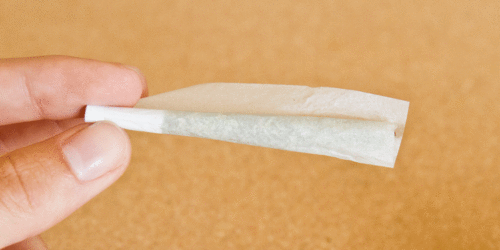
Next, lick the strip of glue through the rolling paper. This may take a bit more persistence than licking the strip of glue directly, but once you lick and apply pressure, you'll be able to clearly see the glue strip through the paper, indicating that it has sealed correctly.
Note: If the glue strip comes undone at this stage of the process, the likelihood of a re-tuck is very low. At this point, it may be better to grab a fresh paper and start over.
5. Remove the Excess
The final step is to remove the flap of excess rolling paper. Tearing the excess paper is the traditional technique and has a low margin for error, whereas burning the flap off is more for show and usually ends in disaster.
TEARING
To tear the excess paper, re-lick the glue strip and gently tear the excess paper away from the joint beginning at the crutch. Keep one hand on the glue strip as you push the flap away from your body. Do not pull to either side—doing so will likely unravel all your hard work! As shown below, the fingers holding the flap are positioned behind the joint. It typically helps to move your hand placement up the joint as you continue to tear towards the tip.
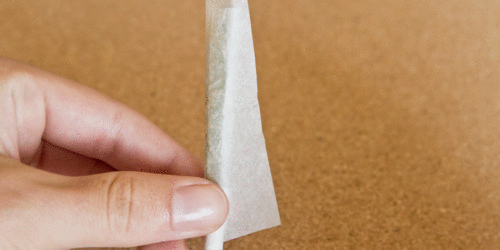
Note: if you're having trouble tearing the paper off, it's because it's not sufficiently moist and needs to be re-licked. Don't force it! Give the section overlapping the glue strip another lick and try again.
TORCHING
The second method is a novelty trick for style points: You can set fire to the excess paper near the crutch and watch it burn all the way up the joint.
Note: you must re-lick the glue strip through the paper to create a flame barrier!
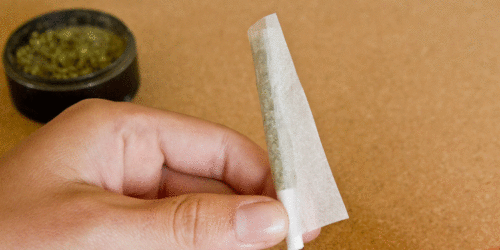
Burning the flap of excess paper is less precise and results in a higher likelihood of ruining the joint.
Regardless of the removal method, you should now have an inside-out joint with the bare minimum paper required to seal it. Although rolling inside out is less forgiving when learning, once familiar, you may find it easier than rolling traditionally.
How to Roll an L Joint
An L is a really long joint that gets its name from the paper orientation prior to rolling. Knowing how to roll an L is especially useful when smoking in large groups or with those who have high tolerances. The beauty of an L is that you can instantly increase the size of your joint simply by adding an additional rolling paper leaf. This means that you can turn two regular size papers into a king-size joint in a pinch!
1. Create the Rolling Paper
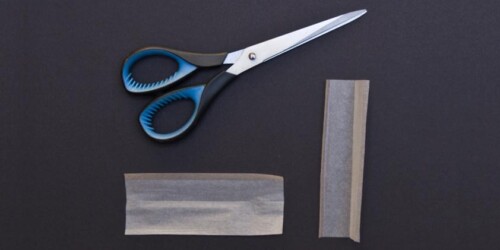
Rolling an L is no different than rolling a normal joint, except that you will be using a rolling paper with an 'L' shape (created by sticking two papers together). To create the L shape, place two sheets of rolling paper on a flat surface in front of you. Orient one of the papers normally, with the glue side up and facing you. Rotate the second paper an additional 90 degrees counterclockwise from the same position, so that the strip of glue is next to the end of the first paper. If you prefer the joint orientation reversed, simply rotate the paper clockwise and attach it to the other end of the first paper.
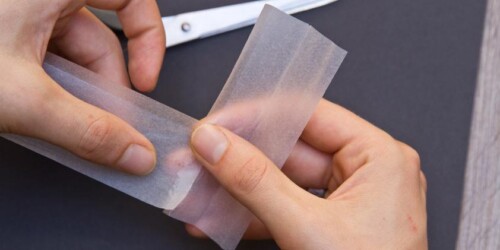
Then lick the lower portion of the glue strip of the second paper and attach the two together. You should now have a single rolling paper that looks like an L.

If you are looking to smoke less paper, you can cut off the far corner of the rotated paper as indicated in the photo above. Note that, in our experience, it helps to let the glue dry out a bit before moving to the next step, otherwise it is easy to rip apart the papers.
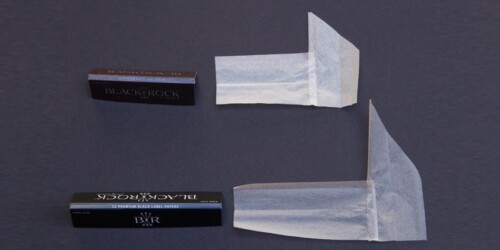
This technique can be used with any size rolling paper to increase the volume of your joint.
2. Load & Arrange
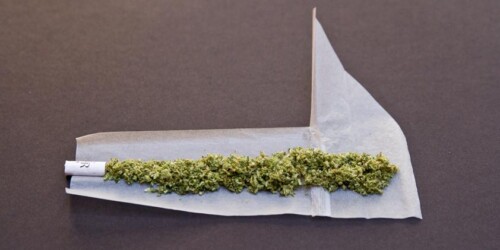
Now it's time to load the rolling paper with ground bud. Make sure you use a grinder , as crafting an L joint will be very difficult without properly ground cannabis. An effective grinder does not have to break the bank!

Arrange the ground buds in the trough of the paper as you would with any other joint . It's important to note that because you are using a longer paper, the shape of the joint will be more pronounced; meaning a tapered cone will appear more conical and only the truest pinner will look like a straight joint .
3. Roll Slow and Smooth
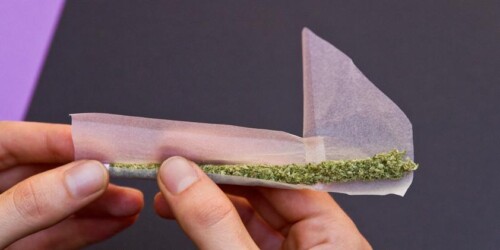
That said, make sure you arrange for the shape you intend to roll—use the photos below as a reference.
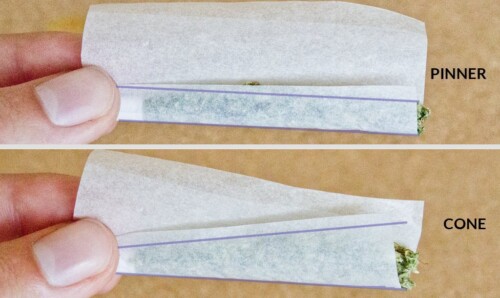
4. Shape it Straight
Don't forget our classic pull-from-the-tip technique to straighten the paper out!
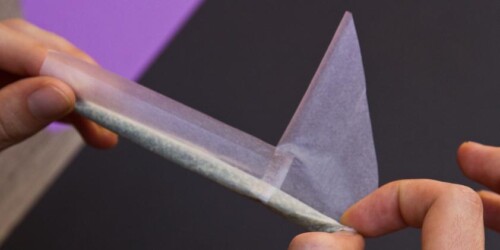
Once the joint has been formed, lick and seal the rolling paper. This will require licking two separate glue strips. Both parts of the paper will be sealed normally, the rotated portion of the paper will simply spiral around the tip of the joint until fully sealed.

Note that because of how the papers are attached, the L cannot be rolled inside out .
5. Seal the Flag
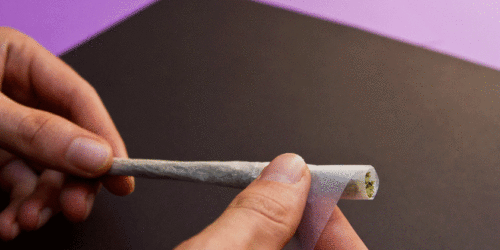
How to Roll a Twax Joint
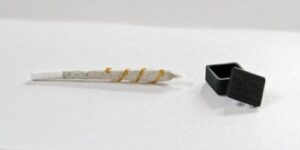
If you're looking for a way to make your joints hit even harder and burn even slower, we suggest you 'twax' them—aka add concentrate to your bowl or joint.
As cannabis extracts have become more readily available with recent legal changes, so has their application on and within joints. If your state isn't so cannabis-friendly, don't fret; you can use the kief in your grinder or the rosin tech to create your own concentrate or opt for federally legal Delta-8 for a therapeutic boost. Here are some helpful tips when twaxing for the first time:
Option 1: Apply Inside

The easiest way to try twaxing is to add the concentrate inside the joint or blunt . For reference, you can also add concentrates to the top of a pipe if you prefer glass. This method is most commonly used for concentrates like THC or CBD kief and CBD isolate that are powdery in consistency.
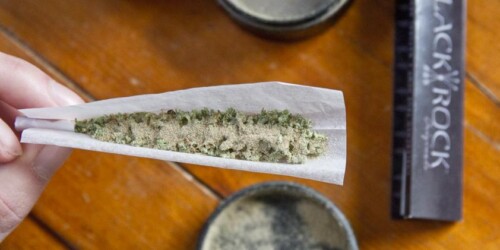
To do this, simply incorporate your concentrate of choice ( BHO , dry sift , ice water hash , rosin , etc.) when loading and arranging the ingredients of your joint .
Work the concentrate into the center of the joint when shaping to ensure an even, run-free burn.
If working with BHO , you can either break it into smaller chunks or roll it into a snake with your fingers. The ease of application will be dictated by the consistency of the BHO , so shatter will be less forgiving than, say, a snap-n-pull consistency.
To increase the malleability of a stable, shattery concentrate , apply heat and/or pressure to soften it. You can work the concentrate between your fingers like silly putty, or you can pick up the concentrate with a dabber and hold a lighter a few inches below to make it easier to work with, reapplying heat as needed to maintain a workable consistency.

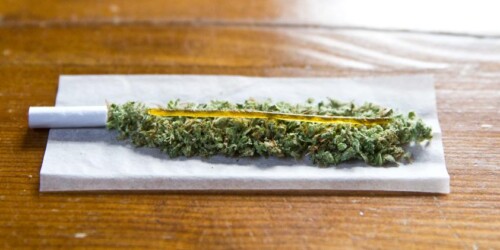
Very stable, shattery consistencies are easier to break into chunks, whereas snap n' pull consistencies can be rolled into snakes and laid into a joint with minimal effort.
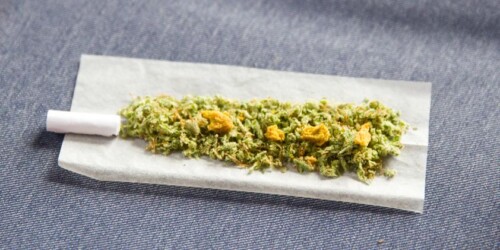
Some concentrate consistencies, like budder/wax , can only be applied to the inside of a joint or blunt, as they're too brittle to be applied outside. To use these textures, break the concentrate into chunks and disperse them through the joint.
Option 2: Apply Outside
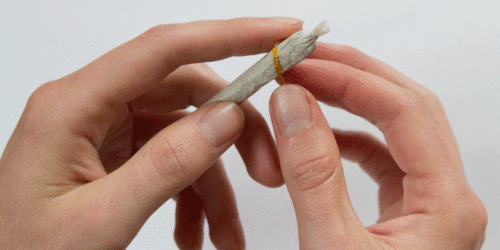
Concentrates can also be applied to the outside of joints. This requires a concentrate with a snap n' pull or sappy consistency, as opposed to more brittle wax or budder . Work the concentrate into a snake-like shape before wrapping it around the outside of the joint.
Note that the snake can be made thinner when wrapping around the joint by pulling gently during wrapping. To begin the wrapping process, adhere one end of the snake to the joint by pressing it to the paper, applying a touch of heat if necessary to create a good bond.
Next, begin rotating the joint in your fingers as you pull and wrap the concentrate around the joint as indicated. For added power, you can roll the sticky, oil-covered joint into a sandy or crumbly textured concentrate (like dry sift or ice water hash ) for an added punch. Simply use a lighter to warm up the concentrate on the outside of the paper prior to rolling in hash or kief for maximum stickiness.
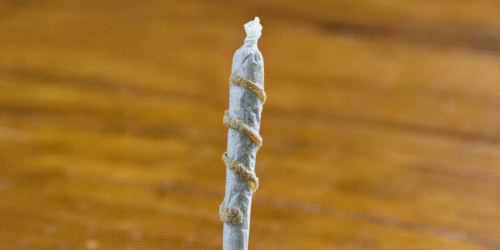
Extra care must be taken when smoking heavily twaxed joints (on the outside) as the hot, viscous concentrate has the potential to drip off the joint at the point closest to the cherry (messy and wasteful). Try rotating the twaxed portion upward to avoid this.
Rotating the joint at an angle in the smoking process tends to alleviate this issue. A thinner, more even application to the outside is also helpful, so try to pull your concentrate thin when twaxing for best results.
Twaxing vs. Dabbing
Many are curious as to whether dabbing or twaxing is more effective when it comes to consuming concentrates. The fact is, such a comparison would be like comparing apples and, well, sourdough bread. The two are not in the same category.
Dabbing involves the flash vaporization of concentrates that are generally free of plant matter and residual solvents. Twaxing, on the other hand, involves the combustion of the concentrate, plant matter (ground cannabis buds or organic hemp flower), and the rolling paper . Thus, the two methods utilize different amounts of heat as well as differing inputs.
In our experience, dabbing induces more clear-headed effects through flavorful vapor, while twaxing induces a very powerful, hazy effect through thick smoke. In the end, it's a matter of preference according to how you like to feel your concentrates.
We recommend twaxing to those who love smoking joints but need to stretch their stash over a few days. Rolling twaxed pinners is a reliable solution for conserving flower and still achieving the benefits of a very potent dosage. You can also use CBD for twaxing!
The Difference between a Joint, Spliff, and Blunt
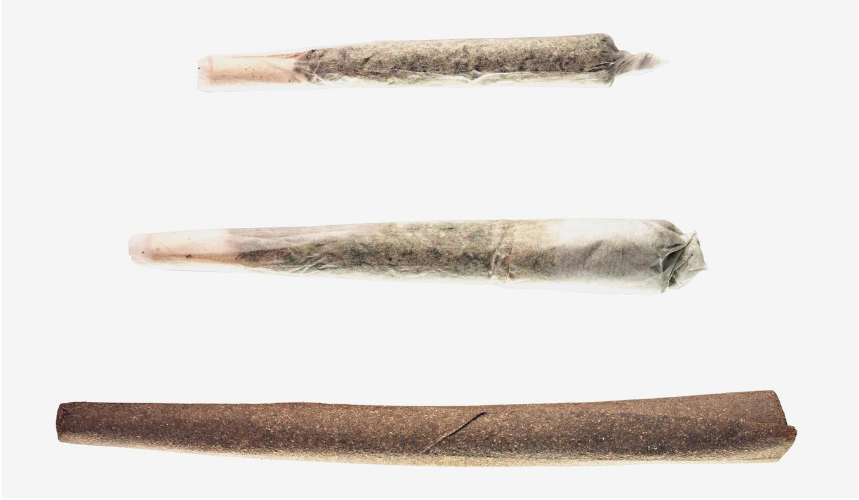
Whether you've been smoking cannabis for one day or fifty years, you've probably heard of a joint or blunt. Depending on how experienced you are with cannabis rolling techniques or where you're located, the term "spliff" may be equally as common. Nevertheless, newbies and experienced smokers all over the world sometimes mistake the three for each other.
They are, in fact, very different, each with unique characteristics and opportunities for customization. This guide will help you understand the differences between a blunt, joint, and spliff and provide visual guides to help perfect your rolling technique.
What is a Blunt?
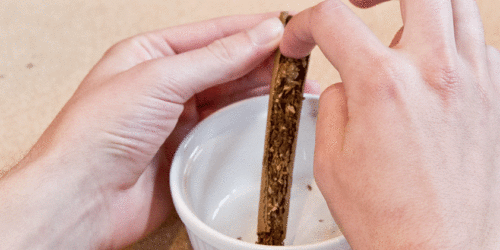
While joints are rolled with specific rolling papter, a "blunt" refers to marijuana rolled inside a gutted cigar or cigarillo and is essentially a cannabis cigar. Often, these cigarillos are purchased only for this purpose. The cigar is split, the tobacco guts are thrown aside, and the tobacco leaf or paper is used to roll up enough weed for several people to share.
Blunts have been around for quite some time, and could easily be the most common way that recreational cannabis is socially consumed. Though the origin of the blunt is unknown, many speculate that the "blunt" was born in the '80s because of the affordability and accessibility of gas station cigars, as well as its ability to hold enough cannabis for larger groups to enjoy. Again, it's all speculation, but the popularity of blunts may have taken off because of references made in popular hip-hop music at the time. For many people, rolling blunts is easy and adds a tobacco twang that is unmatched.
How Much Cannabis Will a Blunt Hold?
Depending on who you ask, a blunt is supposed to hold anywhere from a half to a whole gram of flower. You can easily fit more (around 1.5 grams) for larger groups, but depending on how it's rolled, it may burn too quickly.
Blunts Come in a Variety of Options
While the term "blunt" generally refers to cannabis rolled in a gutted cigarillo, there are multiple modern options available to change up your blunt rolling and smoking experience. You can purchase the traditional cigarillos in hundreds of different flavors, which provide excitement and variation for regular cannabis smokers. You can also purchase blunt wraps instead, which are basically the cigar wrapper without the tobacco inside, and they come ready to roll. These wraps could be the traditional tobacco leaf, or you can find hemp wraps for a tobacco-free blunt smoking experience. Each will roll a little differently, but rolling a blunt is easy. If you need a little help, scroll further down in this article for a visual guide to rolling a beautiful blunt.
What is a Spliff?

A spliff is somewhere in between the tobacco twang of a blunt and the simplistic, shareable experience a joint offers. Spliffs are even more like "marijuana cigarettes" than joints because they actually contain tobacco. Spliffs are generally rolled using a cigarette paper with even parts tobacco and cannabis inside. However, since spliffs are rolled with high-quality rolling tobacco and not cigarette guts, they don't taste much like a cigarette at all. Instead, they offer the same cannabis-derived euphoria mixed with the pleasant head-buzz from tobacco. Spliffs are more common in European countries but are utilized by smokers all over the world.
How Much Flower Will a Spliff Hold?
A spliff will hold the same total amount as a joint—roughly half a gram—but generally hold less cannabis due to its tobacco content. Like joints, you can customize the paper and rolling technique to hold as little or as much as you'd like. You can also adjust the cannabis to tobacco ratio to fit your liking.
Alternative Ways to Roll a Spliff
Because rolling a spliff and rolling a joint is similar, similar alternatives apply here that apply to joints. You can choose from a variety of different papers, including different flavors, to change up your spliff smoking experience. Many people enjoy the opportunity to further customize their experience with different styles of tobacco, too.
How to Roll a Spliff
Many enjoy the pleasurable head buzz induced by the tobacco in a spliff. The inclusion of tobacco can also help a joint filled with sub-par cannabis burn more consistently. That said, not all spliffs are created equal – some taste like a nasty cigarette, while others have an added depth to the flavor profile. There are several factors that go into the rolling process; and this guide will help you master the art of rolling the perfect spliff.
Choose the Right Tobacco
Similar to cannabis, there are a variety of quality tiers for tobacco. Your classic pack of cigarettes will rank among the lowest from a quality standpoint, whereas a mild blend of rolling tobacco will be of superior quality. It may not come as a surprise, but if you roll a spliff with the tobacco from an emptied cigarette, its probably going to taste a lot like that same cigarette (which has a lot more chemicals in it than just tobacco). Alternatively, rolling a spliff with high quality, aromatic loose-leaf rolling tobacco, can be delightful from a flavor perspective. Fresh, high quality rolling tobacco will retain some moisture; it should not be bone dry like the little flakes that come out of a cigarette.
Mix The Right Ratio
Let's set the record straight, a spliff is a 'cannabis cigarette mixed with tobacco' not a 'tobacco cigarette mixed with cannabis.' That said, there should never be more tobacco than cannabis in your spliff. The right ratio will depend on the type of tobacco used, the size of the spliff, and your personal tobacco tolerance. As a general rule of thumb, spliffs with low percentages (five to 10 percent, pictured left) of tobacco still retain the favorable qualities of a joint, while spliffs with high percentages (over 25 percent, pictured right) of tobacco begin to take on the characteristics of a cigarette. Europeans & Pacific Islanders typically lean toward a heavier split, some even go so far as to roll 60-percent cannabis and 40-percent tobacco. Our preference is more like 90-percent cannabis, 10-percent tobacco.
How to incorporate
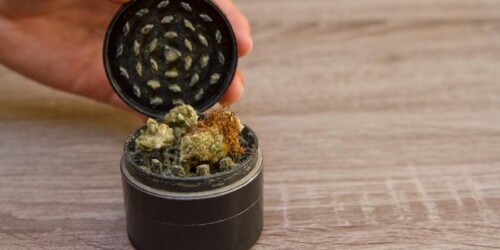
The tobacco is best incorporated during the grinding process . Mixing the tobacco with cannabis (or raw hemp flower) ensures a smooth, even burning spliff. Tempting as it is, simply sprinkling the tobacco on top of the ground cannabis will result in an uneven burn as the tobacco and cannabis burn at different rates. We recommend putting the cannabis buds and loose-leaf tobacco in the grinder together for a seamless blend.
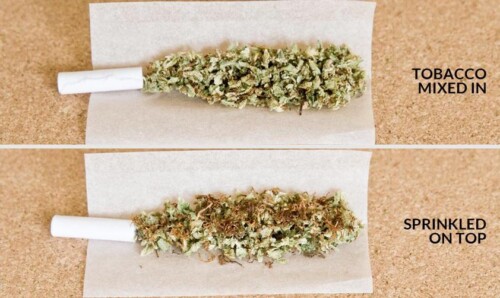
From here, just roll the ground cannabis and tobacco mixture up the same way you would any other joint.
Make sure you have all the key elements for rolling great joints: weed grinder, crutches, papers, and a lighter at the bare minimum. Although many steps in the joint rolling process are largely preference-based, there are several tips that require the above items if you want to improve your smoking experience.
How to Roll a Blunt
The process of rolling a blunt is very similar to rolling a joint. You will simply be using a tobacco leaf instead of a traditional rolling paper .
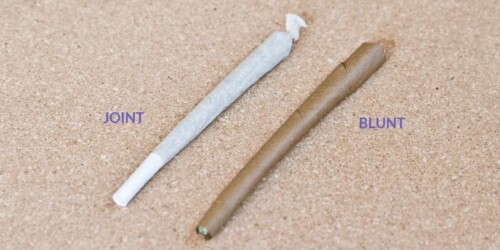
Prepare Your Leaf
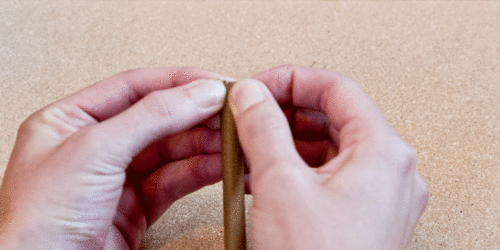
The first step is to prepare the cigar for rolling. In order to hollow out the cigar, you will need to split it open. This is typically done using your fingers or a blade (there are blunt splitters expressly made for this purpose); we will demonstrate both methods. Note: If you are using a blunt wrap, this step will not apply as the tobacco leaf is not filled with tobacco.
When splitting the cigar open with your fingers, we recommend starting at the end with the mouthpiece and working down towards the end that will be ignited. If the cigar is too dry, it will be difficult to perform this step without cracking the outside. To combat a dry cigar or wrap, forget breathing all over it or licking it (please, don't do this). Instead, try wrapping the cigar in a damp (not soaking, but thoroughly moistened) paper towel for a few minutes. If you're in a serious hurry, you can put the wrapped cigar in the microwave for a few seconds (we're talking three to give short seconds) to speed things along, but don't cook the 'gar. The alternative is to use a sharp blade, something like a knife or razor to split the cigar.
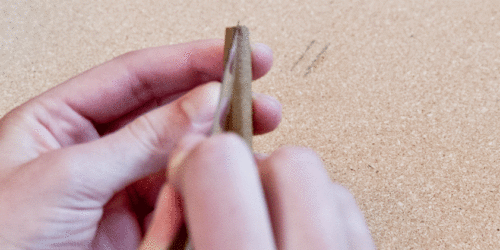
Regardless of the method you choose, the important part is removing all of the tobacco from the cigar—unless you're rolling a spliff.
 If the tobacco leaf is still dry, you can give it a lick so it becomes more pliable or, preferably, press it in a dampened paper towel for a few seconds at a time until it revives a bit. More moisture in the wrap will make for easier rolling.
If the tobacco leaf is still dry, you can give it a lick so it becomes more pliable or, preferably, press it in a dampened paper towel for a few seconds at a time until it revives a bit. More moisture in the wrap will make for easier rolling.
Now you should have an empty tobacco leaf rolling paper that is ready to be filled with cannabis.

Grind the Cannabis
Grab your favorite strain and grind it up. A fine, uniform grind is important as it will result in a slow-burning blunt with a smooth draw. We highly recommend using a grinder , so if you need to invest in your first (a wise investment if you consume cannabis or hemp flower with any regularity), we recommend GrassCity , they have a great selection.
Arrange the bud for rolling
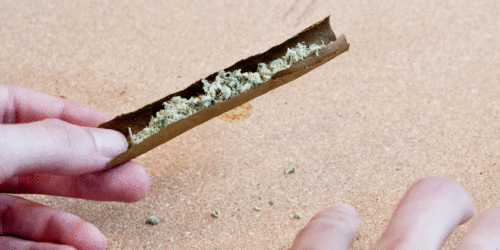
Blunts are typically rolled straight, as opposed to coned . Thus, the next step is to evenly arrange the ground bud in the trough of the bunt/wrap to ensure a smooth, even burn and an uncomplicated roll.
An uneven dispersion will make rolling the blunt into a straight, uniform cylinder very difficult, so really take your time with this step. You are, in the most literal sense, setting yourself up for success in the next step: rolling the damn thing.
Roll slowly, compacting the flower
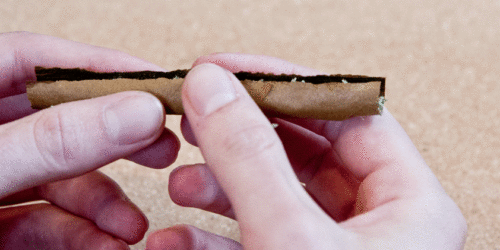
The next step is to roll the ground cannabis into a cylindrical tube. Resist the temptation to focus so much on one section of the blunt that the rest falls apart on you—try to take a holistic approach to rolling the blunt (this will be much easier if you set yourself up well in the last step).
Tuck & Lick
The tuck can be initiated at the mouthpiece or in the middle of the blunt—it's a matter of personal preference. If you choose to start at the mouthpiece, give that third a lick and stick it down; working your way to the end that will be lit.

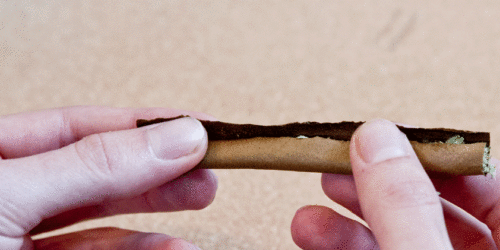
If you prefer to start in the middle, lay down about the middle third and then work your way outward toward each end.
Seal and Dry

Once the blunt is sealed, you can use a lighter to dry out any moisture left from licking and sticking. After the blunt is sealed, applying heat will help it hold its shape.
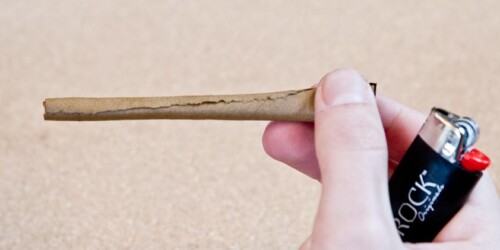
As you can see, it requires quite a few items to roll a slow-burning blunt. If you are rolling in advance, make sure you protect your blunt because they can break easily in transit. We recommended storing your blunt and rolling supplies in a discreet smell-proof case between smokes to avoid any awkward moments with family or friends .
CBD Blunts: Relief Without the Buzz
You've likely had a cannabis blunt at some point, but did you know you can also consume CBD in this classic style? For an extra boost, you can also twax your blunt with CBD oil or isolate for intensive symptom relief.
Rolling Paper Material Guide

The major factors to consider when evaluating potential papers include rolling difficulty, burn rate, smoke-ability, taste, and environmental impact.
Wood Pulp
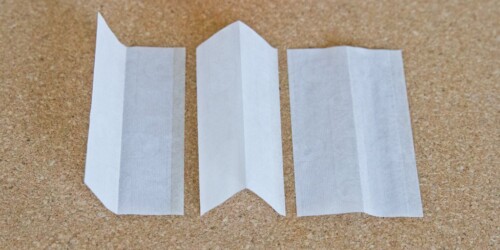
The very first rolling papers were likely made using wood pulp—the same material as printer paper and cigarettes. They are arguably the easiest papers to use when learning to roll a joint and certainly the most common, you can find them anywhere. They stay lit through a storm and maintain a medium to fast burn rate. Unfortunately, they are usually the worst tasting paper variety with the most noticeable aftertaste. This subsequently means they produce the most ash, burning less cleanly and contaminating your smoke. They are the lowest quality papers from an environmental and personal health perspective .
Traditional wood pulp papers can be 100-percent wood pulp or partially blended with flax—a quick Google search will tell you the composition of nearly any brand. Wood pulp papers are either bleached with calcium carbonate or chlorine (they will appear white) or unbleached (brown or translucent). As a general rule of thumb, the less processed the papers are, the less you notice that unnatural, burnt-paper-taste. You can find wood pulp papers in a variety of thicknesses and flavors.
Hemp
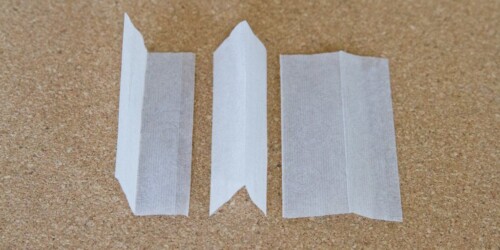
Hemp papers are typically made from 100-percent hemp fiber and most are unbleached. Hemp papers can be found in a variety of thicknesses, but as a general rule of thumb, they have a thicker, more texturized feel than rice papers. The texturized feel of hemp papers provides good grip and makes for relatively easy joint rolling . Hemp stays lit better than rice paper and adds a mild, pleasant, taste some may describe as sweet or musky. As a bonus, hemp rolling papers are the most environmentally-conscious option.
Rice

Rice paper is made with processed rice and can include other additives such as sugar and flax. Rice is the thinnest of the major paper types, and therefore results in the least noticeable taste and the slowest burn. The thin, smooth texture of rice papers can make them a challenge to roll joints with , but the reward is a slow-burning paper with little to no taste. On the downside, it may go out if not constantly smoked.
Comparison
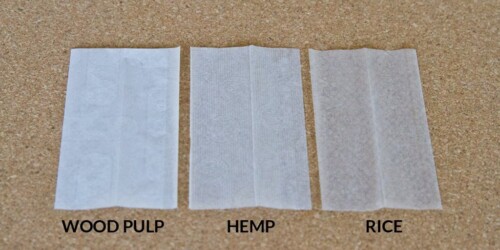
While we have covered the most common rolling paper materials, there are other novelty rolling papers as well. Some incorporate gold flakes while others are infused with artificial flavors. There are also transparent rolling papers made of cellulose. While these papers are fun on occasion, we don't recommend them for the everyday smoker. We can help you roll slower-burning joints by flipping the paper inside out , perfect your style with cone or pinner tips, increase the potency of your joints by adding cannabis concentrates to create a twax joint .
Rolling Paper Size Guide
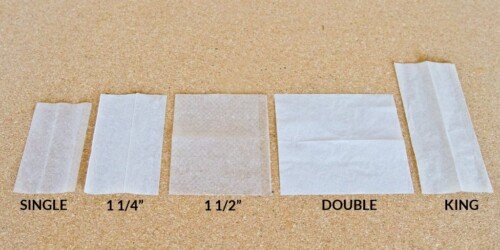
Rolling papers come in different sizes for a reason—different size papers will yield different types of joints. Depending on your location, the size of your smoking circle, and your dosage preferences , you can roll cannabis into a variety of shapes and sizes. It is important to note that the exact width and length within each size category varies slightly between manufacturers, so if your roll depends on particular dimensions, be sure to note the measurements on the label.
Before you start, have you selected the best rolling paper material for your smoking style? Wood pulp, hemp, and rice papers all smoke differently and impart different flavors on your cannabis or organic hemp flower.
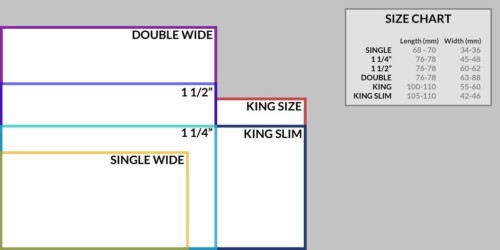
Single Wide

Single wide papers typically measure 68-70 mm in length and 34-36 mm in width. These papers are very common and can be easily found at gas stations and smoke shops. They tend to be less popular among cannabis smokers because of their small size and consequent rolling difficulty, but their slim profile and short length make them perfect for a solo smoke.
1 ¼"
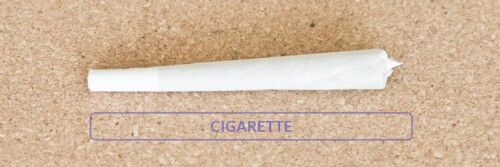
As the name indicates, 1 ¼" papers can hold approximately 25 percent more than a single wide rolling paper. The typical 1 ¼" paper measures 76-78 mm in length and 45-48 mm in width. The slightly larger size of the 1 ¼" rolling papers makes them the most popular size on the market today.
The increased width of the paper allows them to be rolled into more of a cone shape than the single wide papers, perfect for those of us who have difficulty rolling perfect pinners. This size is great for small groups, two or three people, but heavier smokers may also choose to smoke them solo.
1 ½"
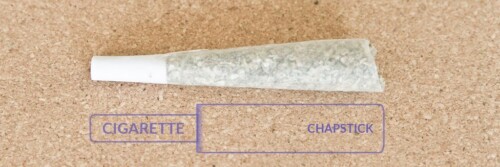
These papers are even wider than the 1 ¼" rolling papers. 1 ½" papers typically measure 76-78 mm in length and 60-62 mm in width. Essentially, these allow you to roll joints that are wider in diameter than the 1 ¼" rolling papers create. This size is less common, but still widely available at smoke shops and many convenience stores. 1 ½" rolling papers are great for small group sizes, two or three people.
Double Wide
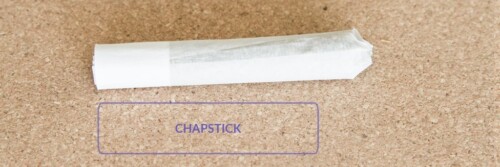
These papers are intended to double the capacity of single wide papers, creating joints that are, well, chonky. They're a fun novelty, but aren't the most practical rolling size out there and, thus, aren't the most widely used.
Because these are the least popular rolling paper size available, they vary greatly from brand to brand. They typically measure roughly 76-78 mm in length and 63-88 mm in width. This size allows you to roll the largest diameter cones , but maximizing the capacity of these papers is inefficient from a smoking perspective. Furthermore, most people do not utilize the entire capacity, which results in a joint rolled with significantly more paper than necessary—making for a harsher smoke.
King Size
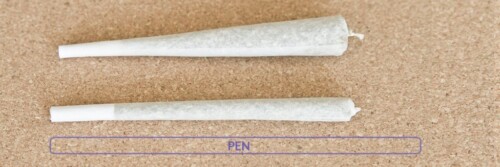
King size rolling papers are the largest standard size available, generally measuring 100-110 mm in length and 55-60 mm in width. King size papers also come in a slim variety—referred to as King Slims. The king slims, as the name suggests, are slightly narrower by +/-44 mm than the standard king size.
The increased length of king size papers makes them the second most popular size on the market today, as they are good for larger groups without necessitating a blunt. The size is best for three to five people, though it could also be split between two heavier smokers.
Spool

If you need to go bigger, there is no shortage of larger rolling papers on the market today. In fact, you can even purchase rolling paper on a spool similar to tin foil for maximum length, serving smoking circles of five or more people.
What to Buy
Ready to up your rolling paper game? Start by expanding your collection of rolling paper sizes and materials.
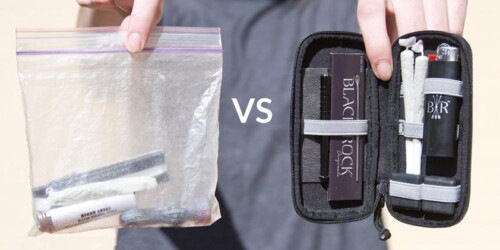
Regardless of your rolling paper size preference, you can keep everything you need in The Safety Case. With room for king-size joints and even blunts, your rolling supplies will be ready to go in this smell-proof smoking kit.
Can I Use Printer Paper to Roll a Joint
Source: https://keytocannabis.com/how-to-roll-an-l-joint/

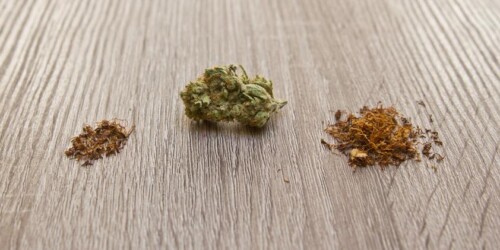
Belum ada Komentar untuk "Can I Use Printer Paper to Roll a Joint"
Posting Komentar